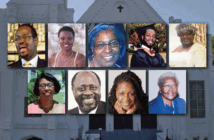December is often the time when congregations and denominations require annual evaluations of clergy and staff. Evaluation is a good thing. But when the only feedback provided is in the once-a-year formal evaluation, the limitations often exceed the benefits.
There are two basic types of assessment. The required once-a-year review is an example of “summative” evaluation. Usually these are required review times, and an action is taken related to the review—often the submission of a written report. Summative reviews may lead to decisions such as a salary increase or termination, with many options in between. There is a place for summative reviews, but only if they come after a considerable amount of “formative” assessment.
Formative evaluation is the feedback people receive “along the way” when no decisions are being required and no reports filed. This assessment may take place just after a meeting or at the conclusion of a major project. It might come in a brief comment or during a luncheon conversation. It can be as simple as someone saying, “Let’s talk about what just happened.”
When the only feedback provided is in the once-a-year formal evaluation, the limitations often exceed the benefits.
Leadership growth tends to take place primarily from formative evaluation because, with no decisions at stake, people tend to focus exclusively on the feedback. This is why it is suggested that in the course of a year, about 80 or 90 percent of assessment should be formative with the remaining 10 to 20 percent summative.
If you are involved in year-end reviews, how can you determine if sufficient formative feedback has taken place throughout the year prior to the required assessment? A simple question might help.
Does anything come up in the annual review that the person being evaluated is hearing for the first time?
There should be no surprises in annual reviews. There may be unresolved issues to discuss, but they will have come up through formative feedback throughout the year so that everyone is very familiar with the issue.Take full advantage of year-end reviews to increase leadership effectiveness. But remember that these reviews have their limits unless combined with feedback throughout the year that has only one purpose — to help someone do better what they are already committed to doing.
Related Resources:
- Feedback Without the Pain by Lovett H. Weems, Jr.
- Lewis Pastoral Leadership Inventory™ (LPLI)







